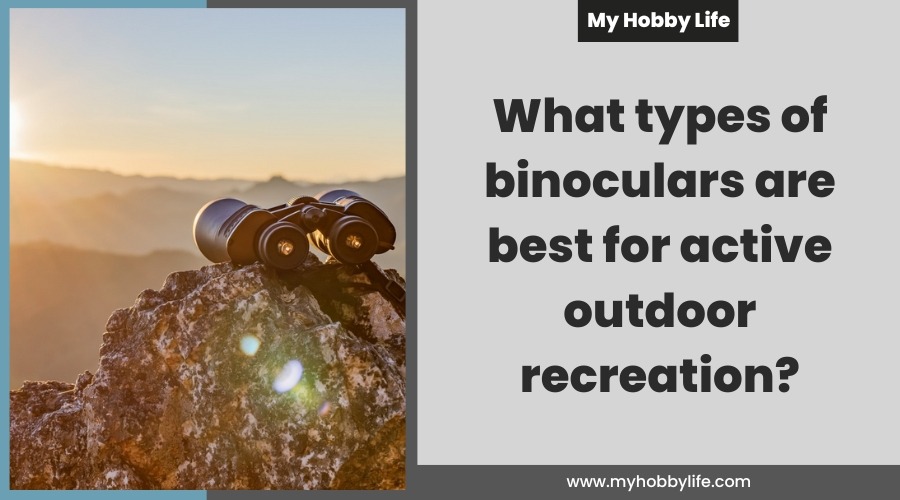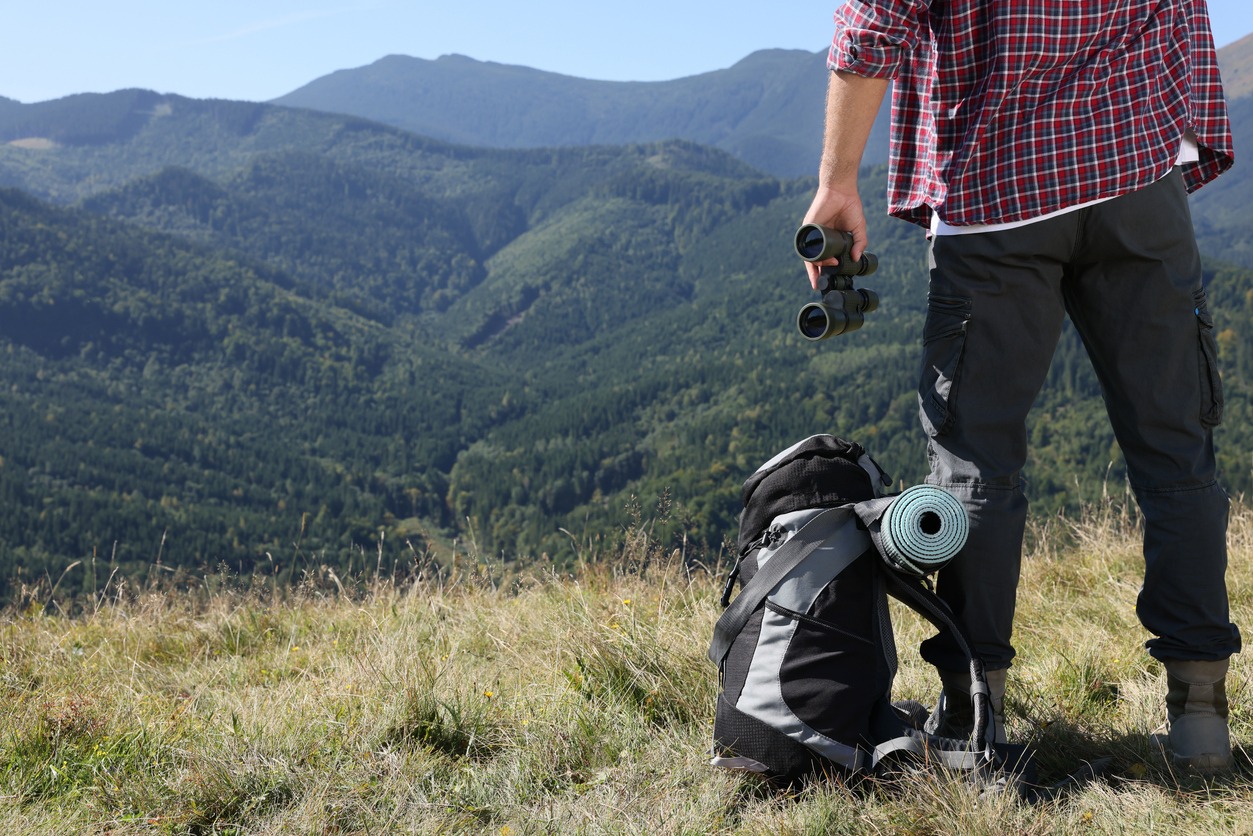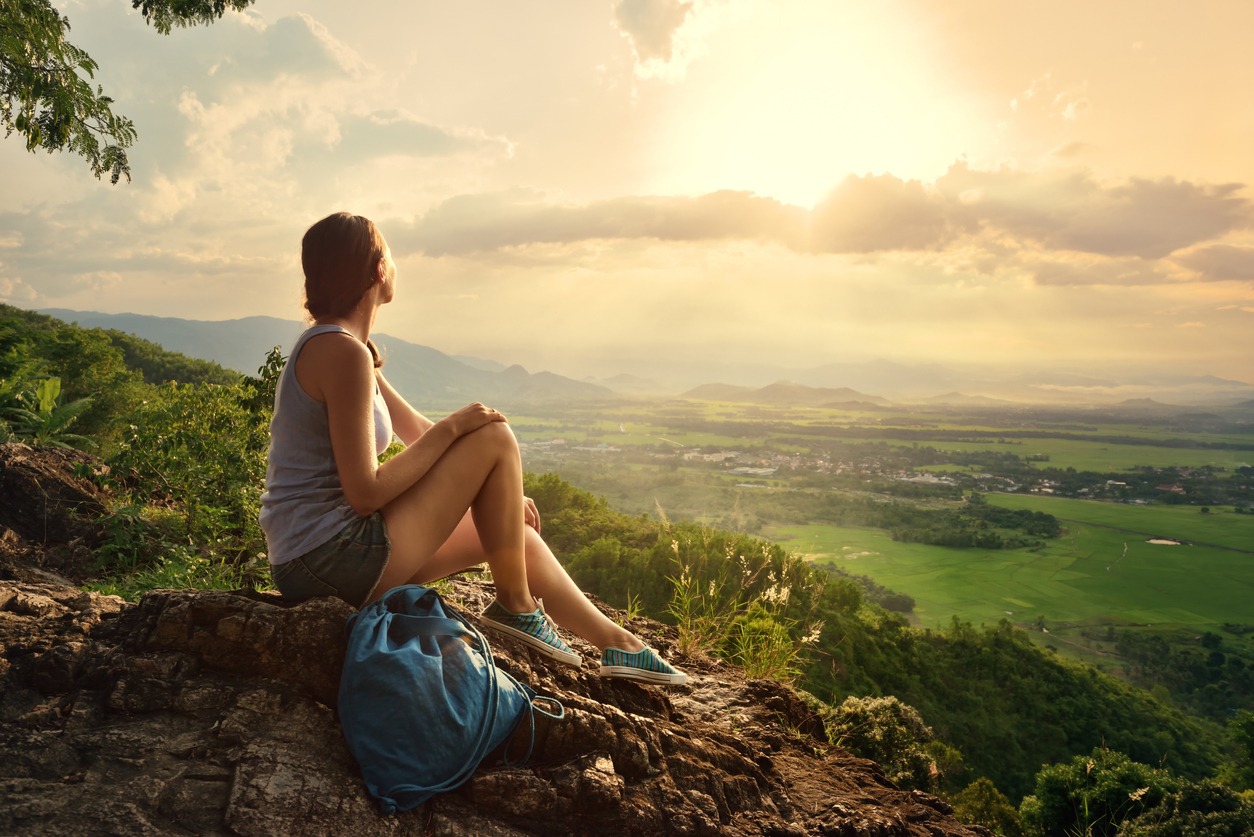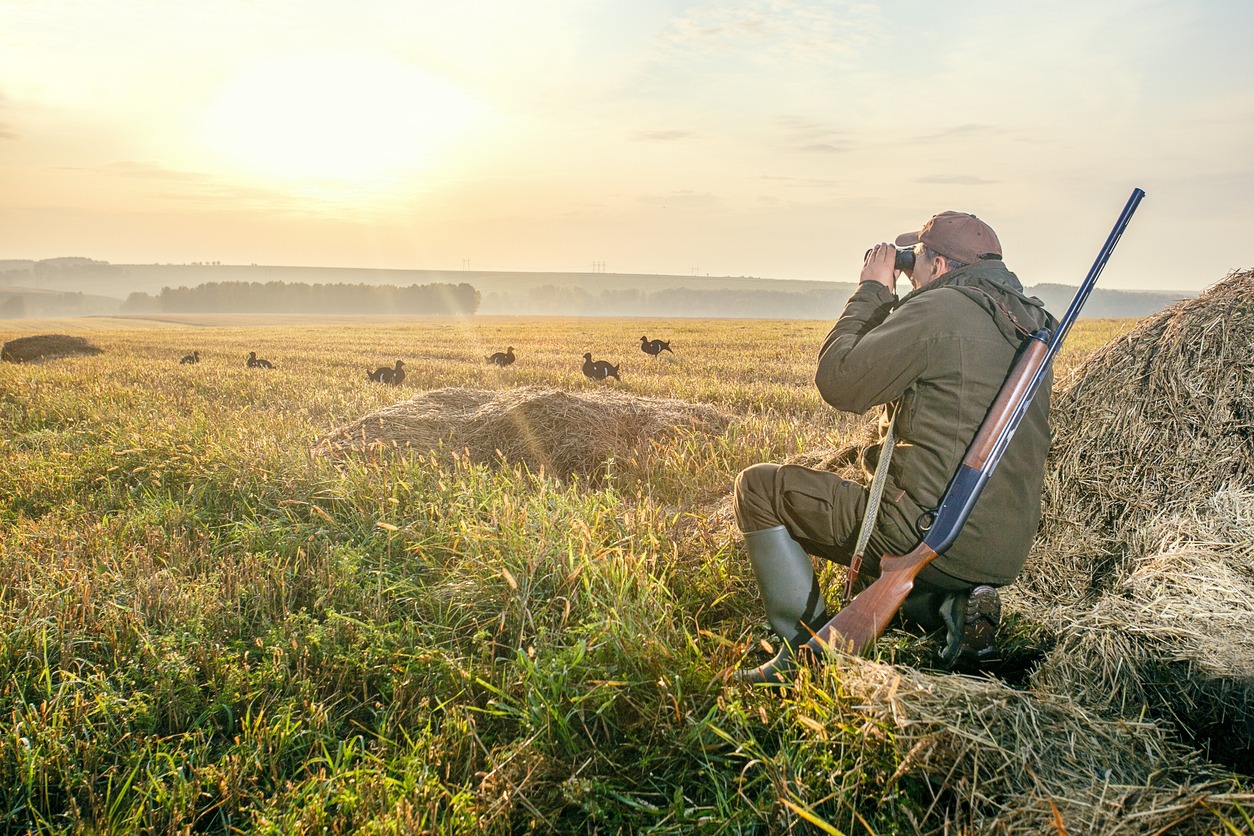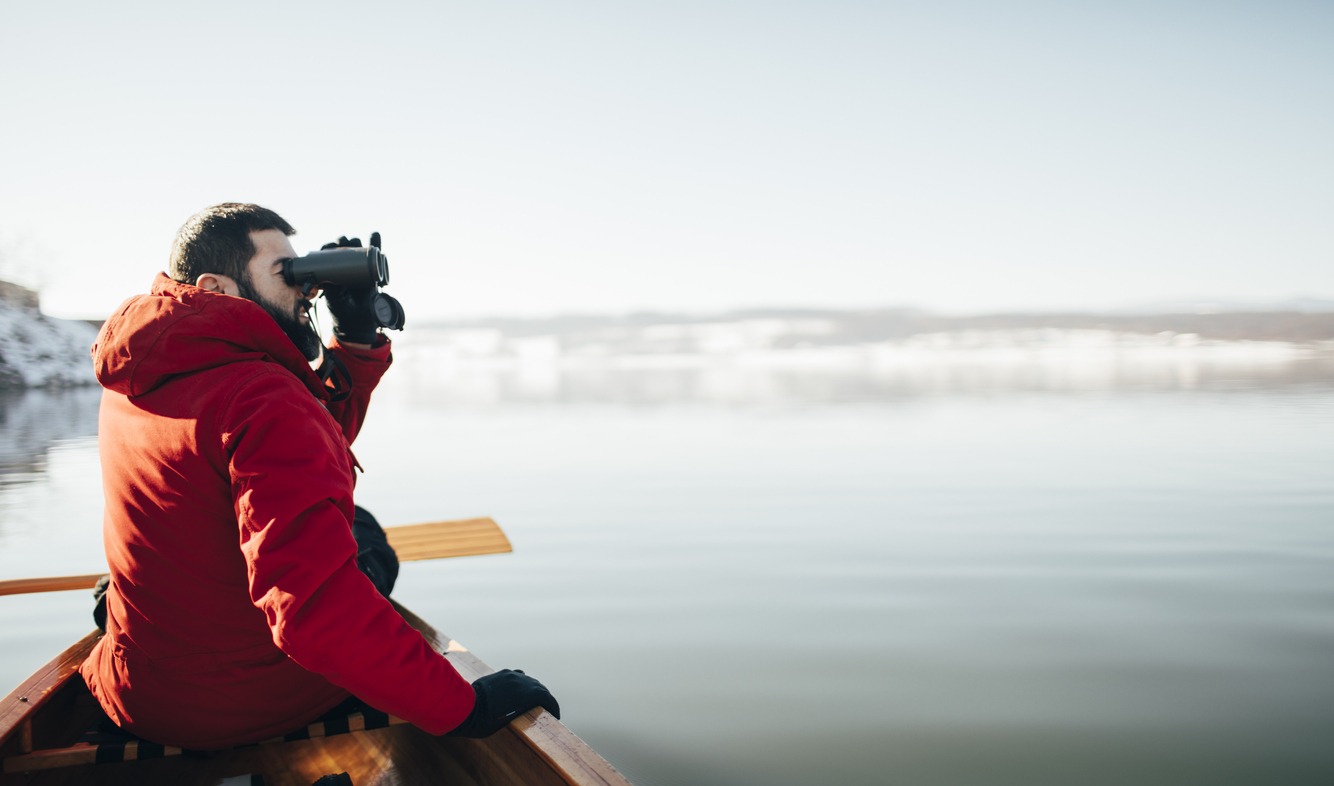Binoculars are a staple in many forms of outdoor recreation. Whether it’s hiking, mountain climbing, backpacking, or hunting, having a pair of binoculars with you allows you to see things up close, witness breathtaking sceneries, architectural wonders, or fascinating wildlife, or make your hunting trip safer and more successful.
While the human eyes are miracles of their own, they can only do so much. Binoculars just open up new possibilities that will make you love the outdoors even more.
If you don’t have a pair of binoculars yet or are gearing to replace your old, shabby set, you’re in the right place. Not all units are the same and you need to take a lot of factors into account to get the best type of binoculars for your preferred activity.
To show you what we mean, read ahead as we’ve collated everything you need to know when choosing the befitting binoculars for active outdoor recreation – leading you to a more enjoyable and memorable experience in the outdoors.
Factors to Consider When Choosing Binoculars for Active Outdoor Recreation
Look in the market and you’ll see that it’s flooded with endless binocular options that make the selection process an intimidating task. As such, it’s important to take note of the different considerations that can help you narrow down your choices and end up with a smart decision on your purchase.
1. Magnification Strength
One of the key points to look at is magnification strength, which refers to how many times closer the object will appear when looking through the binoculars.
You can identify it by checking the two numbers specified in the model’s description. The first number with an “x” refers to the magnification strength. For instance, on a pair of 8×42 binoculars, the magnification strength is 8. With that, the animal, person, or natural scenery you’re viewing will show 8 times closer than when you view it with your naked eye. If it’s 10x, it’ll show like the object is 10x closer, and so on and so forth.
Typically, if you need binoculars for general observation of landscapes or sceneries when hiking or mountain climbing, you won’t need 10x magnification and a pair of 8x binoculars will already suffice. If you’re hunting or viewing wildlife in the forest, you will probably need the extra 2x magnification to see small animals like deer, squirrels, or small birds.
2. Aperture
The second number following the magnification strength refers to the aperture or the objective lens size. For example, if it shows 10×42, then the lens diameter is 42mm. If it’s 10×50, it’s 50mm, and so on and so forth. It’s another important factor, given that the diameter of the lens determines how much light gets into the binoculars. The bigger the aperture, the more light can enter the unit. Thus, the brighter the image will be.
You won’t need too much a pair of binoculars with a larger aperture for active outdoor activities in broad daylight, as you have all the light to work with. However, if your hobby entails using them in low-light conditions, such as hunting under dense forest cover or at dusk, you will need a larger aperture to allow the binoculars to collect more light and make it possible to view your subjects.
Yet, it doesn’t mean that you should be buying the pair of binoculars with the largest aperture available. Take note that the aperture adds weight and size. In general, a pair of 8x42mm binoculars will provide balance and are perfect for most outdoor enthusiasts.
3. Field of View
Field of view (FOV) refers to the total area that you can view in the binocular eyepiece. Be mindful that the field of view can vary widely between different binocular models, even if they are similar in other specifications. That’s why it’s always vital to check if the unit you’re checking has a sufficient field of view.
Not to worry as manufacturers usually mention the FOV and it’s expressed in feet at 1,000 yards. For example, if the model shows 341 feet at 1,000 yards, then you can view a swath of area of 341 feet of the scene from left to right at 1,000 yards. The amount of FOV you need depends on the outdoor activity you intend to use the equipment.
If you’re hunting on a big expanse of land, you need ample field of view to watch and spot moving targets. Binoculars with a FOV of 357 feet at 1000 yards, 367 feet at 1000 yards, 393 feet at 1000 yards, or 420 feet at 1000 Yards are recommended for such outdoor activity. If you’re a backpacker or traveler, you will also benefit from a wider field of view in order to take in more of the beautiful scenery.
However, note that the narrower the FOV, the sharper the focus will be. So, if you’re hunting in a rainforest and you wish to spot or hunt animals hiding in the bush, you’ll need a narrower field of view to see still targets easily.
4. Prisms
Apart from lenses, binoculars also use a set of prisms that are responsible for correcting the orientation of the image collected by the objective lens, allowing you to see things upright. Truth to be told, no specific prism type is better than the other. Each of the two has its own perks and drawbacks, and everything depends on your needs and preference.
Roof Prism: Roof prism binoculars use a simpler, more straightforward mechanism where the prisms, objective lens, and eyepiece are constructed in a linear fashion. With that, these binoculars are styled to have straight tubes, which makes them more compact and lighter in weight. Thus, perfect for most outdoor activities. The catch is that they are relatively more expensive and are not as widely available.
Porro Prism: Porro prism binoculars utilized a system devised by Italian inventor Ignazio Porro. Rather than being linear, the traditional mechanism features the prisms in a zig-zag manner, creating a broader hinge between the oculars. While they are heavier and bulkier than their roof prism counterparts, the main advantage of Porro prism binoculars is that their classic design prevents light loss, which results in clearer, brighter images. Plus, they are also relatively cheaper, making them good value for your money.
5. Glass
Glass is one of the critical components of binoculars. As such, it’s also a significant feature in determining the quality and the price of the unit. Like the lenses used in cameras, ones in used binoculars are complex and precision-engineered.
The best binocular lenses are made of BAK-4 or Barium Crown glass, which has a high reflective index and few flaws, such as bubbles getting trapped during construction that intensifies internal reflection. Still, if you’re serious about your outdoor hobbies, BAK-4 is your best bet. Just anticipate that you’ll shell out more money as they are generally more expensive.
On the other hand, there is also the BK-7 glass, which is more commonly used in binoculars. It’s a lower-density glass that has more flaws but it is much cheaper, making it ideal for casual outdoor activities.
The difference between images produced by the two types of glasses is almost unnoticeable for most people when used in daylight. The gap can be seen in low-light conditions where BAK-4 shows superior performance as it’s able to transmit almost all the light it receives.
To distinguish the type of glass, you must look at the exit pupil of the binoculars. With BAK-4, the exit pupil is circular, while BK-7 glass features a non-circular, squared-off exit pupil.
There is also SK15 glass but is quite rarer than the two, and its performance lies somewhere between BAK-4 or BK-7 glasses.
Meanwhile, high-quality lenses are also rated as low or extra-low dispersion glass. It implies that the glass has been engineered to transmit light with no distortion. Thus, delivering the best image quality possible with the optimum color rendition.
6. Lens Coating
Another vital aspect when searching for binoculars is lens coating. Manufacturers apply anti-reflective coatings to lenses to prevent light loss. Without coating, light transmission can drop to 70%, but with AR coatings, glare is reduced, raising the light transmission to 95%. In turn, it results in brighter, clearer, and sharper images. Plus, they also help provide better contrast and make colors more vivid.
There are different types of AR coatings used in binoculars, such as:
Coated: means that there’s a single layer of anti-reflective coating on at least one of the surfaces.
Fully-Coated: means that all lenses and surfaces are coated with a single layer of anti-reflective coating.
Multi-coated: means that some of the lenses and surfaces have multiple layers of anti-reflective coating.
Fully multi-coated: means that there are multiple layers of anti-reflective coating on all the lenses and surfaces.
Note that anti-reflective coating is also a determinant of the price of binoculars. The better coating, the more expensive a unit will be. With that, you can see fully multi-coated lenses being used in high-end or premium binoculars.
7. Eye Relief
Eye relief refers to the distance between your eyes and the binocular eyepiece. It is measured in millimeters and it is the position where your eyes can still see the entire field of view. The farther you move your eyes from the eyepiece, the smaller the visible FOV will be and you will not see the full picture.
With that, it’s essential to get a pair of binoculars with longer eye relief. They are easier to use, especially for longer periods, and prevent difficulty and fatigue. If you wear eyeglasses or sunglasses, you should get extra eye relief as they will be in the way taking space between your eyes and the eyepiece lens.
For regular users, an eye relief of 10 millimeters is recommended, while eyeglass wearers should get at least 15 millimeters of eye relief. Thankfully, eye relief can often be adjusted through rubber eye cups and other features to provide better comfort.
8. Size and Weight
Don’t forget that outdoor activities equate to being on the go and carrying lots of different supplies, equipment, and gear with you. So, it won’t definitely help to add extra weight and size to your most likely crowded backpack.
With that said, never miss considering the weight and size of the binoculars you’re choosing. If you go hiking, it’s best to get compact and lightweight binoculars with you. You’ll find many models of binoculars suitable enough to fit your handbag or backpack. Just be wary that you’ll be sacrificing some image quality where larger and heavier binoculars are superior.
If you’re hunting on a Safari trip but are able to pack light, you can go for a pair of full-size binoculars. These are universal binoculars that work excellently even in poor light conditions. That way, you won’t compromise great optics, which you’ll badly need when dealing with wildlife.
If you’re having issues carrying them with your hunting equipment, you can go back to bringing compact binoculars so you can experience ease on the hunting field. All in all, choosing the size and weight is a matter of recognizing your priorities.
9. Durability
Venturing out into the wilderness entails getting exposed to many outdoor elements. That means that you should be getting a pair of binoculars that can withstand all the rigors and accidents that come with outdoor use.
For the basics, your binoculars should be waterproof or fogproof. Waterproof units usually feature O-rings that provide a seal and keep moisture and other debris like dust or sand at bay. Consider waterproof models if you’re fishing, boating, or rafting, so your binoculars have protection against water.
Just remember that being waterproof doesn’t imply that the pair is indestructible. Binoculars have Ingress Protection (IP) ratings, a metric that states how deep and how long a model can be submerged in water before taking damage.
If you’re a mountain climber or hiker that reaches high elevations and moves between temperatures, it’s best to go for fogproof units. Fogproof models remove the air inside the barrels and replace them with inert gasses like nitrogen or argon that have no moisture. They keep the insides of the binoculars dry and pressurized, preventing them from fogging during temperature shifts. In nature, fogproof binoculars are already waterproof.
As binoculars are also prone to be dropped or bumped, look for a pair that features rubber armor that can absorb impacts. Through that, your binoculars won’t easily crack during an accident. For better durability, it’s also better to have one that uses lightweight alloys like magnesium and aluminum for the casing. Such materials are sturdier and have better protection against rough usage and natural wear and tear.
10. Cost
You can explore a range of price points, depending on what you’re looking for. If you’re on a budget and only intend to use your pair of binoculars for occasional active outdoor activities, you can find a decent model for around $75 to $150. These models are functional but expect that won’t provide outstanding performance.
If you want better image quality, you can find many excellent options in the $150-$600 price range. These mid-range models will do great for most outdoor hobbies. If you are a serious hobbyist and have some extra money to spend, you can opt for premium binoculars whose price tag is over $600.
A good way to go around when buying binoculars is to establish how much you can afford or you’re willing to spend. Afterward, establish all the features that you need and prefer. Then, check all the best options with the budget that you have. Make sure to also read or watch reviews to give you a heads-up about the product. To gain more information about what to look for in binoculars, you can read our Guide to Choosing Binoculars.
What types of binoculars are best for active outdoor recreation?
The truth is, the type of binoculars you need for active outdoor recreation heavily depends on your preferences, necessities, and the specific type of activity you’ll be doing. You need to weigh all the factors and strike a balance to eventually procure the perfect binoculars for you. To give you a glimpse, here are some active outdoor activities and the specifications they require:
Wildlife Viewing: Safari binoculars aren’t always the most powerful units. As you’ll most likely be riding an off-road vehicle, it’s best to aim for lower magnification like a 7x or 8x to keep your view stable. Be wary that higher magnification means higher sensitivity. Moreover, it’s also best to get fully waterproof binoculars with rubber armor as you’re going to use them in locations with lots of water and mud.
Hiking/Backpacking: For these activities, you’ll find roof prism binoculars handy as they are more lightweight and compact, making them easier to throw in a pack. Shoot for mid-range magnification and a wider field of view for a better view of the surroundings.
Traveling: If you love to travel cross-country or outside the country, you’ll also benefit from compact or pocket binoculars. A durable pair with mid-range lenses, magnification, and field of view will suffice for most travel situations.
Paddling: As you’d be taking them in water, having a fully waterproof is a must. While there are water-resistant models, they can only survive light rain showers and not being dunked in a river or lake. You should do the same for other active outdoor activities that involve taking the unit in water.
Extreme Outdoor Activities: For other extreme outdoor activities, your priority should be looking for a model with waterproofing, durability, and portability. The ideal magnification range is 8x or 10x. Also, look for a unit with sufficient objective lens size, so it will do just fine in rising and setting sun conditions.
Night Outdoor Recreation: If you do your hobby after the sunset, such as night fishing or hunting, you need night vision binoculars to see properly in the dark. These binoculars utilize either image intensification or thermal image technology to augment the binoculars’ optical capabilities.
Takeaway
A good pair of binoculars is a must for any active outdoor recreation activity. Just make sure to use all the information above so you can make a smart purchase and end up with a unit that will elevate your experience of seizing the outdoors.
